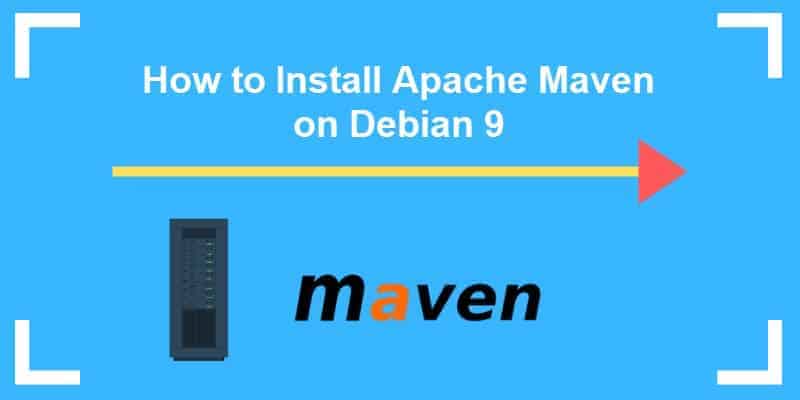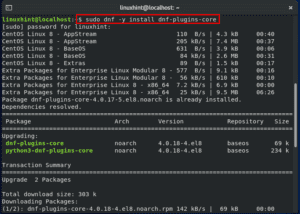

- HOW TO INSTALL MAVEN IN LINUX CENTOS HOW TO
- HOW TO INSTALL MAVEN IN LINUX CENTOS ARCHIVE
- HOW TO INSTALL MAVEN IN LINUX CENTOS SOFTWARE
- HOW TO INSTALL MAVEN IN LINUX CENTOS CODE
If you want to move suspicious files to a separate directory, run the scan using the -move parameter: With these parameters, the antivirus will immediately delete the infected files.

# clamscan -infected -remove -recursive /var/www/ To scan the specified directory for viruses, use the following command: Then you can run the antivirus service or enable it:Īfter you have configured the ClamAV antivirus service, you can scan any server directory for viruses (scanner mode). To make it more convenient, we have deleted change the configuration in the file: Īfter = syslog.target nss-lookup.target network.targetĮxecStart = /usr/sbin/clamd -c /etc/clamd.d/nf

The configuration file already exists, but you will have to change its name: Like you did for freshclam, create a service for ClamAV. Then you can start your service and add it to startup: If you have any problems related to installation, do share with us in the comment section.# nano /usr/lib/systemd/system/rviceĪnd add the following contents to it: That’s It! You have successfully installed Apache Maven 3.5.4 on your Ubuntu and Debian system. Java version: 1.8.0_171, vendor: Oracle Corporation, runtime: /usr/lib/jvm/java-8-oracle/jreĭefault locale: en_IN, platform encoding: UTF-8 If installation went well, you see a output similar to the following. To verify Apache Maven installation, run the following mvn command. Now make the ‘maven.sh’ configuration file executable and then load the configuration by running the ‘source’ command. # MAVEN_HOME for Maven 1 - M2_HOME for Maven 2Įxport JAVA_HOME=/usr/lib/jvm/java-8-oracleĮxport M2_HOME=/usr/local/src/apache-mavenĮxport MAVEN_HOME=/usr/local/src/apache-maven $ sudo cd /etc/profile.d/Īdd the following environment variables in ‘maven.sh’ configuration file. Now we will configure the environments variables for Apache Maven files on our system by creating a new configuration file ‘maven.sh’ in the ‘/etc/profile.d’ directory. $ sudo mv apache-maven-3.5.4/ apache-maven/
HOW TO INSTALL MAVEN IN LINUX CENTOS ARCHIVE
$ sudo cd /usr/local/srcĮxtract the downloaded archive apache-maven-3.5. file, and rename the directory to ‘apache-maven’ using following commands.
HOW TO INSTALL MAVEN IN LINUX CENTOS CODE
Next, visit the Apache Maven download page and grab the latest version of apache maven binary code or use the following wget command to download it under the maven home directory ‘/usr/local/src’. Java HotSpot(TM) 64-Bit Server VM (build 25.171-b11, mixed mode) Java(TM) SE Runtime Environment (build 1.8.0_171-b11) If installation went well, you see the following output. $ sudo apt-get install oracle-java8-installer $ sudo add-apt-repository ppa:webupd8team/java -y $ sudo apt install software-properties-common apt-transport-https -y Java Development Kit (JDK) is a essential requirement to install Apache Maven, so first install Java on Ubuntu and Debian system using the third-party Java PPA Repository and verify the version using following commands.
HOW TO INSTALL MAVEN IN LINUX CENTOS HOW TO
In this article, I will explain how to install and configure latest version of Apache Maven on Ubuntu and Debian distributions along with Java 8 from the PPA Repository. Read Also: How to Install Apache Maven in CentOS 7
HOW TO INSTALL MAVEN IN LINUX CENTOS SOFTWARE
Apache Maven is a free software application management and build automation platform based on the conception of a project object model (POM), which is especially used for deploying Java-based projects, but can also be used on applications written in C#, Ruby and other programming languages.


 0 kommentar(er)
0 kommentar(er)
